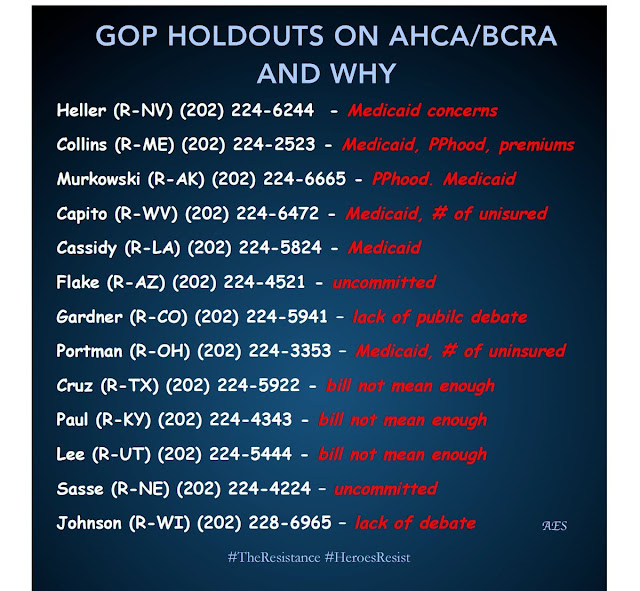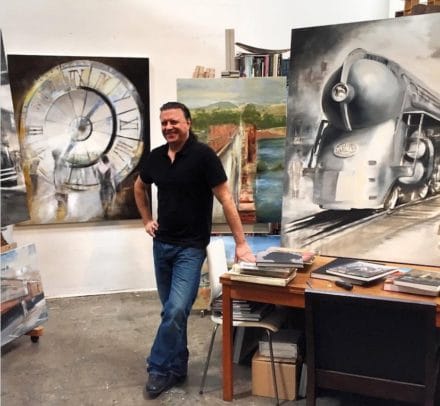 | ||
Richard Diebenkorn July 58.5" x 53.75" oil on canvas 1957 Private Collection |
When I was a kid, my family would drive to the local July 4th events. I remember when I was in High School watching the bicentennial festivities in 1976 from the Marine Corps headquarters in Arlington, Virginia. I gazed across the Potomac towards Washington DC at the French designed fireworks program and saw art in the skies. Carter would be elected later that year and I felt a sense of hope in the future. My dad, a veteran of the Korean War and the Vietnam War never flinched at the explosions. But, years earlier when I played as a small kid with my toy soldiers strewn across the family room floor, I would often whistle an incoming shell sound that was inevitably followed with a "Knock it off!" barked from my Dad. It seemed like a game to me but it wasn't - I learned that many vets find memories of distress in the crackle of explosions and I now try to honor that.
I was only five in 1965 and the small gap in time between the Cuban Missile Crisis and the Vietnam War defined my early childhood. My physical playground was often found in the hills of the Marine Base in Southern California we called home. Camp Pendleton sprawled across the maps my parents carried in their Buick. Pendleton still acts as a physical barrier between the southward sprawl of Los Angeles as it bleeds into its cousin Orange County and the northward creep of San Diego.
As Marine Corps dependents, military brats, we had almost free run of the base in Camp Pendleton. Dressed in cast off, or surreptitiously borrowed, uniforms of khaki or forest green military duds accented by denim and Converse shoes, my older brother and I with a crew of neighborhood kids played soldier in our fathers’ training ground. On weekends, when our neighbors gathered outside to barbecue freshly hunted venison, we would scamper to Combat Town.
This urban battle training ground on Camp Pendleton was first constructed during the 1950’s as a simulated Korean town smacked down in the California chaparral. As if on a set from the TV show Combat, we acted out the parts of valiant sergeants and dutiful privates in this dystopian war ground. Blown out walls reeked of cordite and sweat. The older kids would leap from open second story windows, writhing from imagined wounds. Younger ones like me would gather the spent shells and dull green ammo boxes that littered Combat Town. I would store my plundered gear in the garage and then find the others finishing off the last bits of meat from the barbecue or sipping on coffee in the dry California night around Chosin Circle. On base, the Marine Corps would often name streets for battle sites from their history. Chosin Circle, where our house was located, was named for one of the bloodiest battles of the Korean War. I grew up with stories of the vaunted 1st Marine Division surrounded by ten Chinese divisions. Running low on ammunition, the Marines radioed to headquarters for resupply using the code word for mortar shells. The code word was Tootsie Rolls and that’s what they got parachuted to them in the freezing Korean Winter. Fueled on by not much more than grit and the airlifted candy, the Marines battled their way out of the trap. My dad liked to quote 1st Marine Division General Oliver Prince Smith who, when asked if his company was retreating, barked back: "Retreat? Hell, we are attacking in another direction."
More than memories of the Corps hung around our house, hints of my future passions were also hidden on Chosin Circle. Ours was a house of secrets. Once when probing the deep recesses of our garage, I found combat camouflage paint sticks in a green Marine Corps issue locker. Stacked nearby, I also found oil paint by number kits that my brother and dad liked to play with. I drew jungle green and black stripes across my hand with the camo gear and sniffed the sweet vegetable smell of linseed oil in the small do it yourself tins of paint by number paint. Theater and art gave me their secrets that day and I held tight to them.
 |
| The Beatles travel to Shea Stadium via helicopter 1965 |
There was music too. The younger kids in our neighborhood often sang in their childhood falsettos spirited renditions of the Beatles’ “I want to hold your hand.” After we moved back to Jersey and my dad was on base in Da Nang, The Beatles played Shea Stadium in August 1965. They flew from Manhattan on a helicopter skimming above the city to the roof of the World's Fair building in Queens. My dad in Vietnam was on helicopters too. But in his photos, there was always a gunner leaning against his weapon and scanning the horizon for threats out of an open door.
Commissioned a second
lieutenant in June 1951, my dad was an infantry platoon commander in combat in
Korea and, later, a reconnaissance platoon commander. After the Korean War, he
and my mom were stationed at the American Embassy in Paris, France. After
Paris, he returned to his alma mater Columbia, where he earned a law degree and
then a master of laws degree at my future alma mater NYU. Following a brief
stint in private practice outside of the military when my brother and I were
born, my dad returned to the Corps just in time for the Cuban Missile Crisis.
His unit was on full alert and geared up and would have been part of the first
US forces to invade Cuba if the crisis had not passed. And then there was
Vietnam. My dad - Major Chadwick- was a 3rd Marine Division lawyer. After my family left the base for New Jersey and my dad joined the 3rd Marine Amphibious Force (III MAF) under the command of Major General Lewis W. Walt in Da Nang, Vietnam, Combat Town was transformed into a mock Vietnamese village. Reconnaissance
and secrets are in his blood. And maybe I carried secrets too?
On this Fourth of July in 2017, I think of Santa Monica's best known artist - Richard Diebenkorn. Diebenkorn was/is a Marine. "Semper Fi!", I say. Diebenkorn's artwork July created in 1957 is for me a quintessential American painting. LIFE magazine in their December 1, 1961 issue described the piece as a depiction of a silent fellow occupying a patriotic bench in a blaze of colors, creating a setting of "hot fields and sky." Tonight, we are a long way from the hope found in the early 1960's. That was an era of Camelot in the Oval Office. Yet, there is a hint of melancholy found in the shadows in Diebenkorn's painting. I am reminded of the paintings of Edward Hopper that Diebenkorn admired as a young artist. Olivia Laing in The Guardian writes," Like Hopper, Diebenkorn was interested in evoking mood and emotion. Both men strongly felt the difficulty of painting, the troublesome and sometimes agonising passage from vision to completion. This is what Hopper described as 'decay': the inevitable, distressing gap between the luminous idea and its resolution on the canvas." Diebenkorn's painting July was carried from the exhibition at the 1961 Pittsburgh International Exhibition of Contemporary Painting and Sculpture (Now the Carnegie International) and photographed by Ben Spiegel for the article Art Spectacle in Pittsburgh published in LIFE Magazine in December 1961. Even now as an observer 50+ years later, I fear for the painting. A gust of wind could blow the artwork into the pond. And furthermore, who in that Mad Men world decided that contemporary art was just a prop?
 | ||
Caption from the December 1, 1961 issue of LIFE Magazine: "A trio of bench sitters takes the sun beside a lily pond in Schenley Park. The silent fellow on the left occupies a patriotic bench devised by California Artist Richard Diebenkorn, who, with a blaze of colors, created a setting of hot fields and sky. He entitled the picture July." Photo by Ben Spiegel from the article Art Spectacle in Pittsburgh.  Catalog from the 1961 Pittsburgh International Exhibition of Contemporary Painting and Sculpture (Now the Carnegie International)
Fast forward to 2017 - Trump said he was pulling out of the 2015 Paris Climate Change/Environmental Accord, and that his administration would begin renegotiating to find a deal that was more “fair” to the American people. "I was elected by the citizens of Pittsburgh,” Trump said , “not Paris.”
Soon after Pittsburgh Mayor Bill Peduto hit back at Trump: 'We Will Follow the Guidelines of the Paris Agreement' |
As the Mayor of Pittsburgh, I can assure you that we will follow the guidelines of the Paris Agreement for our people, our economy & future. https://t.co/3znXGTcd8C— bill peduto (@billpeduto) June 1, 2017
Real patriotism requires sharing the burdens and sacrifices of keeping America going. It's about coming together for the common good.— Robert Reich (@RBReich) July 4, 2017
Happy Fourth of July!
Note: This is my first draft on Art, Memories and the Marine Corps which I posted on July 4 2017 - the completed piece can be found here- https://greggchadwick.blogspot.com/2017/07/looking-at-diebenkorn-thoughts-on-art_7.htmlThis is how many fireworks occur over Los Angeles on #July4th pic.twitter.com/oLM6OXTS5J— How Things Work (@ThingsWork) July 5, 2017





















